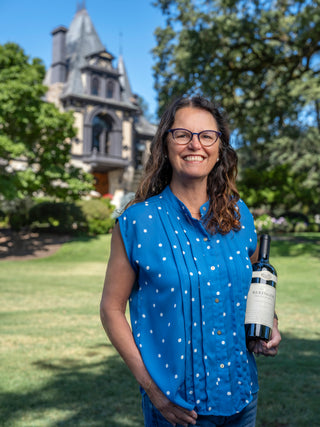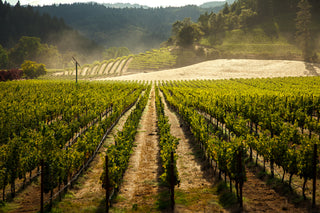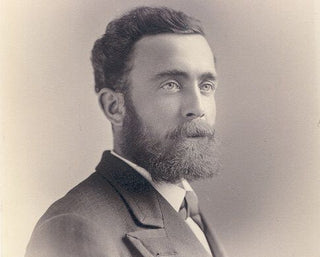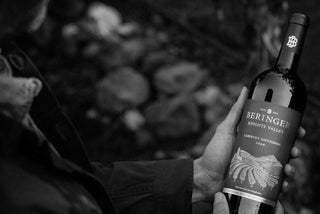

2025 - Present
Margo Van Staaveren
Margo Van Staaveren began her winemaking career at Beringer and brings more than 45 harvests of experience to the role. She has worked with the brand for many years, helping shape some of its most acclaimed wines as part of her leadership across the North Coast portfolio. Known for her refined blending style and deep vineyard knowledge, Margo crafts expressive, age-worthy wines that reflect both tradition and innovation. Her thoughtful, collaborative approach continues to guide Beringer’s winemaking today.
“Beringer has long held a special place in my heart—not only as one of Napa’s most historic estates, but as a benchmark for excellence in California winemaking.”
Previous Winemakers
Winemaker from 2016-2023
Ryan Rech
Ryan Rech served Beringer Vineyards with distinction from 2016 to 2023, rising from Luxury Red Winemaker to Chief Winemaker and General Manager. With a background in enology and a career that spanned RH Phillips, The Ranch, Souverain, and Chateau St. Jean, Ryan brought both scientific rigor and creative vision to his winemaking craft. Guided by a “do no harm” philosophy, he honored the vineyard’s voice in every bottle, showcasing the diversity and excellence of Napa Valley’s terroir. His leadership continued the legacy of one of California’s most historic wineries, blending tradition with innovation to craft wines that were true to their origins and world-class in quality.
Winemaker from 2015 - 2021
Mark Beringer
Mark Beringer, great-great-grandson of Beringer Vineyards’ founding brother Jacob Beringer, came ‘home’ to Beringer Vineyards in 2015, joining as Chief Winemaker and following in the footsteps of acclaimed Winemaker Emeritus Laurie Hook. “I was excited to be making wines for the very winery that my ancestor built, and to be part of the next chapter in this important story of Beringer and of the Napa Valley.” noted Mark. “As a winemaker, there is no greater thrill than having excellent vineyards to work with and Beringer’s are second to none. The diversity of microclimates, terroir and locations truly comprise the best of what Napa Valley has to offer.”
Winemaker from 2000-2015
Laurie Hook
In 1986, Laurie Hook came to Beringer as an enologist, a job that allowed her to solidify the scientific side of her training. In 1997, she was named assistant winemaker to Winemaster Ed Sbragia, and in 2000 was promoted to Winemaker for Beringer Vineyards. “You can’t make wine only through science,” says Laurie. “Ed was a great mentor – he showed me the importance of being true to oneself and that while the scientific part of winemaking is important (and fun), it is just as essential to trust your instincts.” Laurie also pointed out “One of the great things about being part of such a long-standing winery is that it has given us the time to collect some fantastic vineyards. There is nothing better than being out in the vineyard tasting grapes in the early morning, just as the fog rises. Following that process through to a bottle that someone might enjoy 10 years later is part of what makes my work so fascinating. I find it incredibly rewarding to be able to remember each vintage in both winemaking and personal terms.”
Winemaker from 1984-2000
Ed Sbragia
Ed majored in chemistry at the University of California at Davis, headed for a career in science. But his family background made him the top candidate for a job in a winery laboratory upon graduation. Quickly realizing that the winemaker's job was the one he wanted, he returned to California State University at Fresno for a master's degree in enology. After a year working at a Sonoma County winery, he learned about an opening as winemaker Myron Nightingale's assistant at Beringer. "I just called Myron up and asked if I might be qualified for the position. I started on August 9, 1976. Myron was a great teacher. He was the most intuitive winemaker I've ever known. He understood that winemaking requires subjective input—a feeling, a major preference—just like painting or sculpture or any work to which you dedicate yourself." Ed was named Beringer's chief winemaker on Myron's retirement in 1984.
Winemaker from 1971-1984
Myron Nightingale
Myron Nightingale, known as a lovable curmudgeon by his co-workers, was one of the true pioneers of California winemaking. When Nestle S.A. of Switzerland bought Beringer in 1970 and hired Nightingale in 1971, it marked the start of a remarkable run for the 111-year-old winery. From time to time, Nightingale would surprise the industry with a wine that created loads of conversation--and more experimentation by his colleagues. The winemaking program nearest and dearest to Myron's heart was the botrytized “late harvest” wine he made with his wife Alice, the wine that became known as Beringer “Nightingale.” Building on work they’d done together at UC Davis and Cresta Blanca, the Nightingales developed a wine patterned after the great late-harvest Sauternes of France. Using the method they’d pioneered at Cresta Blanca, which imitates in the winery what happens naturally in the vineyard under precise conditions, the couple released their first namesake wine with the 1980 vintage.
Winemaker from 1956-1971
Roy Raymond
Roy Raymond Sr. arrived in the Napa Valley in 1933 just after Prohibition ended after working as a seaman like his father. He was hired at Beringer Brothers Winery in St. Helena, and soon afterward he met Martha Jane Beringer. Her father, Otto Beringer, had guided Beringer winery through the difficult days of Prohibition by diversifying and producing sacramental wine and Roy Raymond had been hired to help with rebuilding after Prohibition ended. Roy and Martha Jane were married in 1936 after a three-year courtship and had two children, Walter and Roy Jr. Raymond. Roy was Beringer’s Cellar Master for 20 years (1956 to 1971) and produced the first Beringer wine from Knights Valley. Roy and his sons left Beringer Vineyards when Nestle purchased the winery in 1971 and started their own family winery in Napa Valley, Raymond Vineyards.
Winemaker from 1932-1956
Fred Abruzzini
As Winemaker at Beringer Vineyards from 1932 until he retired in 1956, Fred Abruzzini was one of the original promoters of Napa Valley wine and of the Napa Valley as a tourist attraction. According to historical accounts, Fred was the one who started opening the winery up to conventioneers from San Francisco. He would travel down to the Golden Gate Exposition and give out brochures and maps showing how to get to the Napa Valley. Fred Abruzzini opened Beringer Winery to the public after Prohibition was repealed and offered the first public winery tours in Napa Valley. Fred was born in Sault St. Marie, Canada, and moved to California as a child. He worked for his uncle at the Cribari winery in Morgan Hill, Calif., before going to work for Beringer.
Winemaker from 1911-1932
Jacob Beringer, Jr.
In 1918 Prohibition was enacted. Jacob Beringer, Jr., Jacob Beringer’s son, kept the winery operational during the Prohibition era by making sacramental wines for churches. He farmed 200 acres of vineyards during these years as Beringer continued annual production of about 15,000 cases of “altar” wines until 1933 when Prohibition was repealed. Varieties grown were Sauvignon Vert, Johannisberg Riesling, Cabernet Sauvignon, Petite Sirah, Alicante, Golden Chasselas, Semillon, Gutedel, Green Hungarian and Burger. While most wineries in Napa Valley were suffering through the tragedy of prohibition, Beringer also found a niche of shipping dried wine grapes to home winemakers which would help them survive the next decade. In 1929 Jacob Beringer, Jr. retired and continued to live in his bungalow on the north end of the property.

Winemaker from 1876 - 1911
Jacob Beringer, Founder
When Jacob and his brother Frederick arrived to Napa Valley from Mainz, Germany in 1869, the two forged a thriving business with the acquisition of 215 acres at the base of Spring Mountain in St. Helena. Possessing a keen sense of agriculture and nature’s rhythms, Jacob Beringer fell in love with California’s promising soil and its resulting fertile abundance. Jacob set out to craft wine similar to the wine from their home country of Germany. The Beringer stone, gravity-flow winery was completed in 1877 (with the top floor added several years later). Jacob Beringer built his stone cellar and employed Chinese laborers to dig approx. 1,000 linear feet of aging tunnels so he could control every aspect of the winemaking process through bottling to ensure every bottle of Beringer wine met his high standards of quality. Through his grit and innovative spirit, Beringer became one of Napa Valley’s most beloved wineries.




